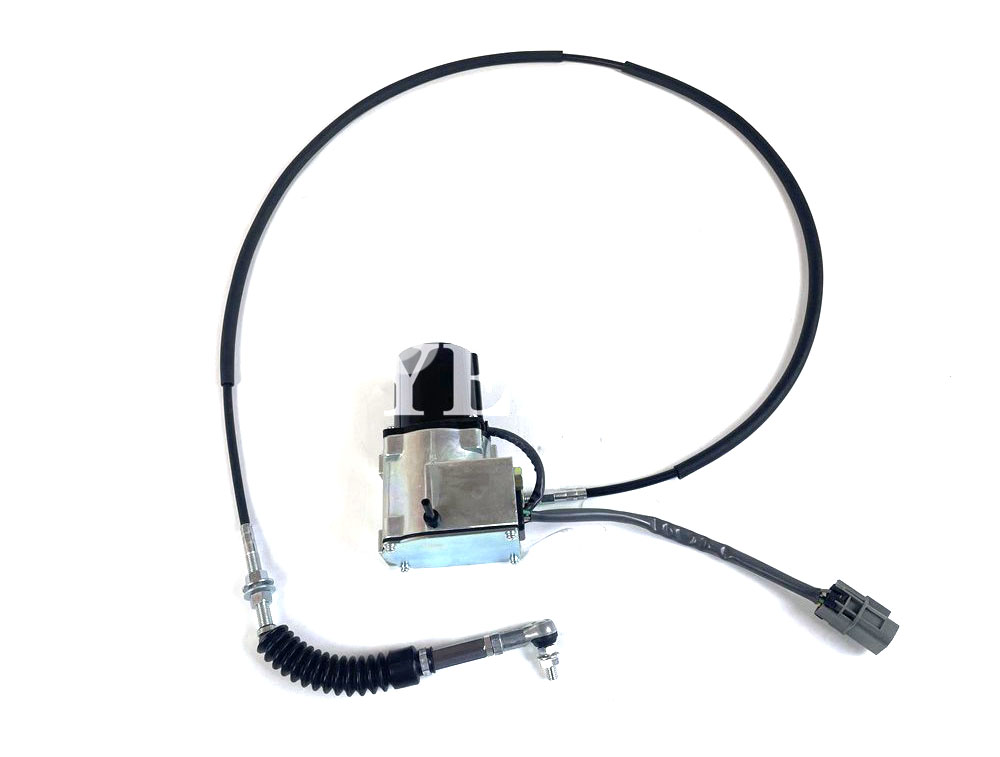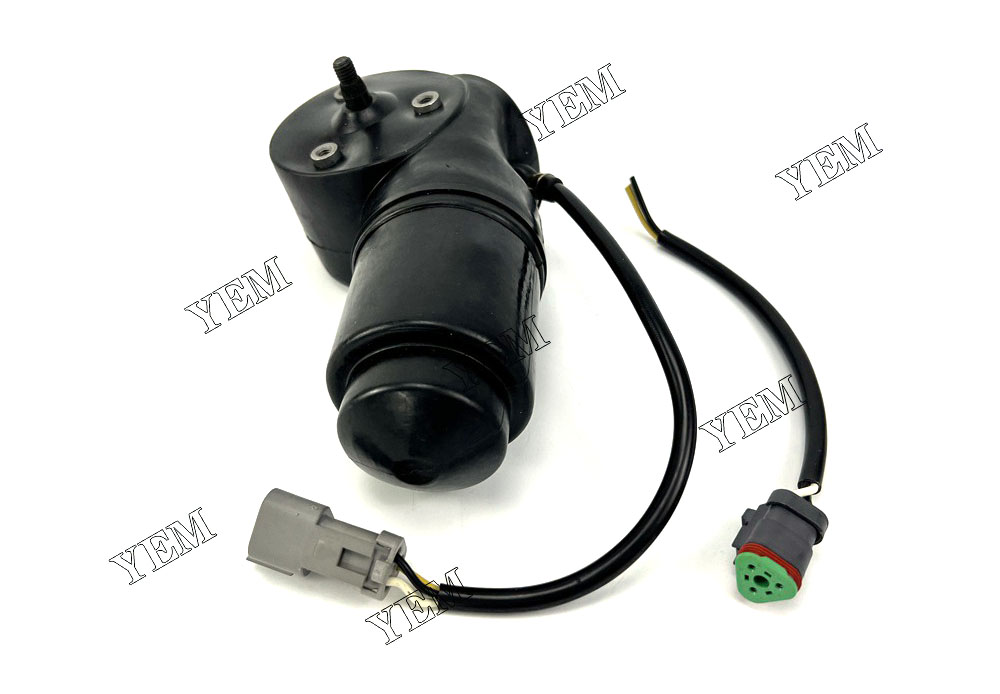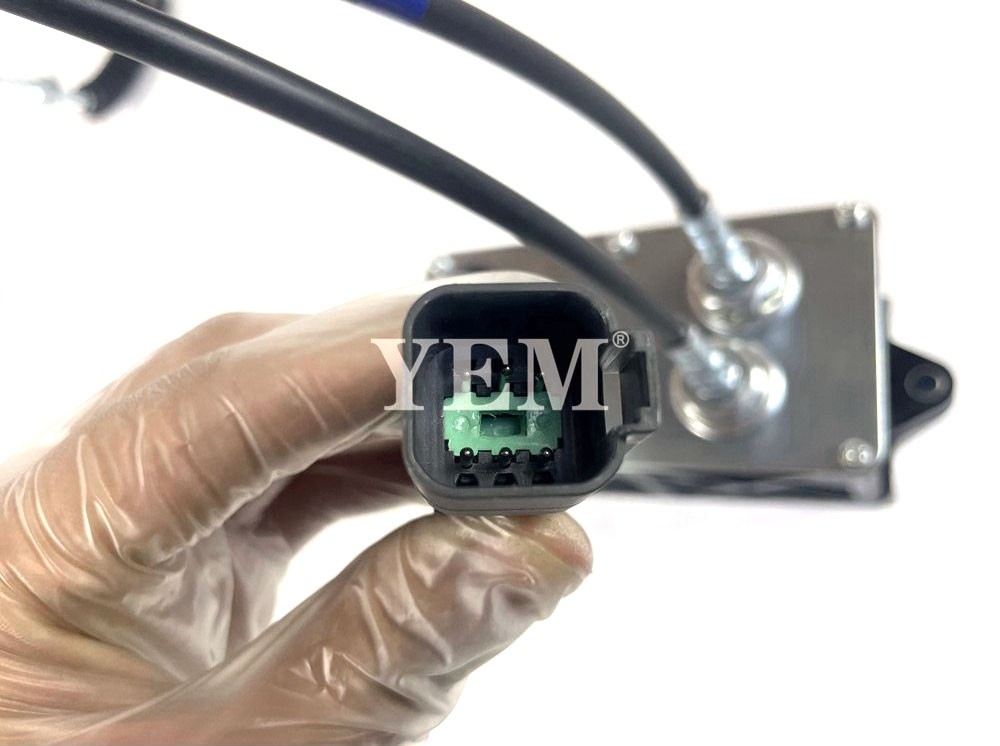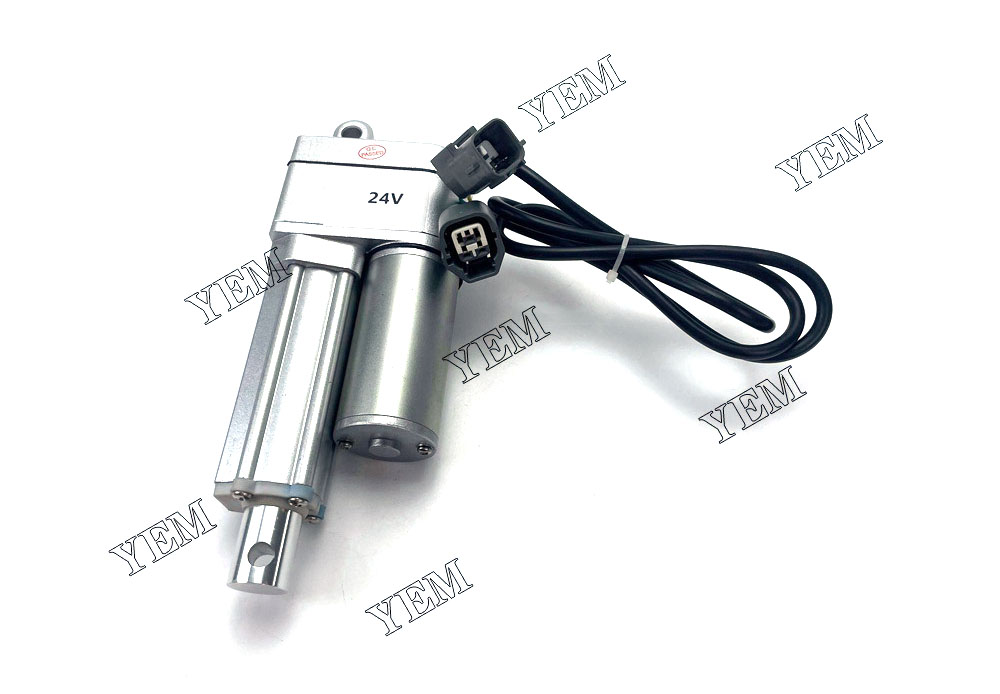How the engine throttle motor works
The engine throttle motor is an important part of the automobile engine control system. Its main function is to transmit the throttle command to the Engine Control Unit (ECU) according to the driver’s accelerator pedal input, thereby controlling the engine speed and power output.
The following is the general working principle of the engine throttle motor:
- Accelerator pedal input: When the driver presses the accelerator pedal, the sensor converts the position of the accelerator pedal into an electrical signal and sends it to the engine control unit (ECU).
- Throttle command transmission: After ECU receives the accelerator pedal position signal, it will calculate the corresponding throttle opening based on the current working conditions and driving mode. Then, the ECU sends the throttle command to the throttle motor.
- Throttle motor execution: The throttle motor is a device driven by a DC motor. When receiving a throttle command from the ECU, the throttle motor will adjust the throttle opening to the corresponding position according to the command.
- Throttle opening feedback: Some engine systems also include a throttle position sensor, which can monitor the actual position of the throttle motor and send feedback signals to the ECU. In this way, the ECU can ensure that the actual opening of the throttle motor is consistent with the throttle command.
- Fuel supply adjustment: According to the opening of the throttle motor, the ECU will adjust parameters such as fuel injection volume and valve timing accordingly to control the engine speed and power output to achieve acceleration or deceleration requirements.
The engine throttle motor converts the driver’s accelerator pedal input into an electrical signal and works in coordination with the engine control system to ensure that the engine’s speed and power can accurately respond to the driver’s instructions.
Common symptoms of throttle motor failure

When an engine throttle motor fails, the following common symptoms may occur:
- Unsmooth acceleration: A fault in the engine throttle motor may cause unsmooth acceleration or delays. You may experience slower response from the accelerator pedal or gaps in acceleration.
- Insufficient engine power: When the throttle motor cannot adjust the throttle opening correctly, the engine may lack sufficient power response. You may feel that the engine is not accelerating quickly enough or that the speed is unstable.
- Insensitive throttle: If the throttle motor fails, you may find that the operation of the accelerator pedal is unresponsive. No matter how hard you press the accelerator pedal, there is no noticeable change in the engine’s revs or power response.
- Increased fuel consumption: When the throttle motor cannot accurately control the engine’s throttle opening, the fuel supply may be unstable, resulting in increased fuel consumption. You may observe that your vehicle’s fuel consumption is higher than usual.
- Error code and fault indicator light: The engine control unit (ECU) may detect a throttle motor failure and generate a corresponding error code. These error codes usually cause the Malfunction Indicator Lamp (MIL) to illuminate. If you notice the MIL light comes on, troubleshoot and repair it immediately.
If you notice any of the above symptoms, it is recommended that the engine throttle motor be checked and diagnosed as soon as possible to ensure proper operation of the vehicle. Consult a professional auto mechanic for accurate diagnosis and solutions.
Throttle Motor Replacement and Installation

Throttle motor replacement and installation usually requires some automotive technical knowledge and experience. The following are general steps and guidance, but please note that the specific process may vary by model and manufacturer. It is recommended that you refer to the specific instructions and recommendations provided by your vehicle manufacturer or seek the help of a professional car mechanic before proceeding with replacement and installation.
- Disconnect Power: Always disconnect the vehicle’s negative battery terminal before performing any work to avoid triggering unintended operation of the electrical system or other components.
- Locating and Accessing the Throttle Motor: The throttle motor is usually located in the engine compartment near the accelerator pedal. You may want to check the vehicle manufacturer’s service manual or drawings to determine its exact location. Some models may require removal of other components for better access.
- Remove the old throttle motor: Using appropriate tools, remove the old throttle motor. This may involve disassembly and removal of electrical connections, piping or support structures associated with the throttle motor.
- Install the new throttle motor: Install the new throttle motor to the corresponding position, making sure it is properly fixed and connected to other components. When installing, be careful not to damage the sensitive components of the throttle motor, and also ensure that the wiring is connected correctly.
- Connect wires and tubing: Reconnect the wire connector and tubing to the newly installed throttle motor. Make sure the connections are secure and correct.
- Inspection and Testing: Once installation is complete, reconnect the vehicle’s negative battery terminal. Start the engine and carefully observe the operation of the new throttle motor. Make sure the throttle response is normal and the accelerator pedal operates smoothly. It is also recommended to check that any fault indicator lights are extinguished properly.
If you do not have sufficient automotive knowledge and skills, or are unsure about replacing the throttle motor, it is highly recommended to consult a professional car repairman for installation. They have more experience and tools to ensure proper installation and commissioning.

Introduction to common throttle motor brands and models
The following is an introduction to some common car throttle motor brands and models:
- Bosch: Bosch is a world-renowned auto parts manufacturer, and its throttle motors are widely used in various car brands and models. Known for quality, reliability and performance, Bosch throttle motors provide precise throttle control to your engine.
- Siemens VDO: Siemens VDO (now Continental Automotive) is another highly recognized supplier of throttle motors. Siemens VDO’s throttle motor uses advanced technology and precise control to ensure engine efficiency and power output.
- Delphi: Delphi is a well-known auto parts manufacturer, and its throttle motors are widely used in many car brands. The Delphi throttle motor has excellent performance, stability and durability, ensuring precise engine control and response.
- Denso: Denso is a Japanese auto parts manufacturer whose throttle motors are used in a wide range of applications around the world. Denso throttle motors are known for their high quality, reliability and superior performance, providing accurate throttle control to the engine.
- ACDelco: ACDelco is the auto parts brand of General Motors in the United States. Its throttle motors are widely used in vehicles of General Motors and other brands. ACDelco throttle motors are renowned for their reliability and superior performance.
These are just a few common car throttle motor makes and models, there are many others that offer decent quality and performance. For your specific vehicle, it is recommended to refer to the technical specifications and recommendations provided by the manufacturer to ensure the appropriate throttle motor model is selected.

Contact us
YEM Excavator Parts Team is a professional team focusing on excavator parts. With our extensive knowledge and experience in this industry, we offer a wide range of spare parts to meet the needs of different customers.
Our products cover various excavator parts such as hydraulic systems, engine parts, chassis parts, etc. We proudly source parts from reliable manufacturers, ensuring each part meets the highest standards of quality and durability.
What sets us apart is our unwavering commitment to exceptional customer service. We understand the importance of prompt support and our team is always ready to respond to inquiries and requests. Our knowledgeable staff will assist customers in identifying the correct parts for their specific excavator model and provide detailed installation and maintenance instructions.
If you would like to contact our expert excavator parts team, you can contact us via our website, email or phone. We are committed to building long-term relationships with our customers and eagerly look forward to helping you with all your excavator parts needs.
